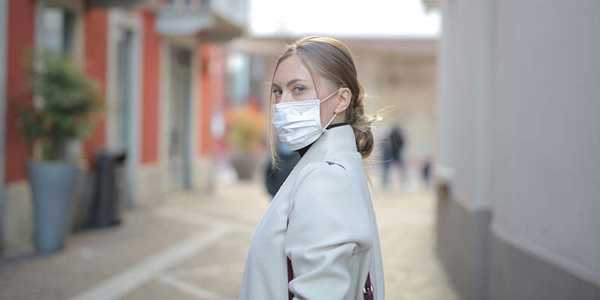10 Facts about Human Metapneumovirus (HMPV) You Need to Know
Human metapneumovirus (HMPV) is a common respiratory virus that often causes cold-like symptoms, such as coughing, wheezing, and a runny nose. HMPV spreads easily and most people are infected by the age of 5. Understanding its transmission and impact is important, especially for vulnerable groups, to improve health responses and prevent serious outbreaks.
Human metapneumovirus (HMPV) is a common respiratory virus that often causes cold-like symptoms, such as coughing, wheezing, and a runny nose. HMPV spreads easily and most people are infected by the age of 5. Understanding its transmission and impact is important, especially for vulnerable groups, to improve health responses and prevent serious outbreaks.
1. HMPV Is a Common Virus You’ve Probably Had Before
Human metapneumovirus (HMPV) is unexpectedly prevalent, with studies indicating that nearly 90% of children are likely to encounter this virus by the age of five. Despite its widespread occurrence, public awareness surrounding HMPV remains remarkably low. Many individuals may be completely unaware that they contracted HMPV during childhood, leading to misconceptions about the virus’s severity and its long-term impact.

2. HMPV Is Not as Severe as COVID-19 but Still Needs Attention
While Human metapneumovirus (HMPV) is generally less severe than COVID-19, typically manifesting with mainly mild respiratory symptoms, it nevertheless can lead to significant illness, particularly in vulnerable populations such as young children and the elderly. Recent studies reveal that, although hospitalizations for HMPV are less frequent or critical compared to those for COVID-19, this virus contributes to substantial morbidity and mortality annually. The Centers for Disease Control and Prevention (CDC) highlights that HMPV is a leading cause of respiratory infections among young children.
3. HMPV Can Severely Impact Infants and the Elderly
HMPV presents substantial risks to both infants and elderly populations, with each group showing increased susceptibility to severe respiratory infections. For infants, particularly those under two years old, symptoms often escalate, leading to higher hospital admission rates during outbreaks. Likewise, older adults—especially those with preexisting health conditions—face heightened risks of complications like pneumonia.
4. HMPV Symptoms Often Mimic the Common Cold
The symptoms associated with Human Metapneumovirus (HMPV) include cough, fever, sore throat, nasal congestion, and fatigue, often closely resembling those of the common cold. This symptom overlap can result in misdiagnosis, as healthcare providers may misinterpret HMPV infections as just mild respiratory illnesses. The challenge is compounded by the variations in symptom severity among different patients, particularly vulnerable populations like infants and the elderly.
5. HMPV Spreads Easily Through Everyday Contact
Human Metapneumovirus (HMPV) predominantly spreads through respiratory droplets that are expelled when an infected individual coughs or sneezes. Furthermore, the virus can remain viable on contaminated surfaces, making contact transmission a significant concern. Common areas such as schools and workplaces serve to facilitate contamination due to close physical proximity and shared environments. This ease of transmission emphasizes the highly contagious nature of HMPV, particularly in community settings where individuals frequently interact.
6. HMPV Cases Spike in Winter and Early Spring
Research has revealed that Human Metapneumovirus (HMPV) outbreaks exhibit distinct seasonal patterns, with peaks occurring during the winter and early spring. A study published in the Journal of Infectious Diseases demonstrated that HMPV incidence rises significantly during colder months, likely because of increased indoor crowding and decreased immunity. Another investigation further indicates that climate factors, such as lower temperatures and humidity levels, contribute to the virus's stability and transmission dynamics.
7. HMPV Is Closely Related to RSV (Respiratory Syncytial Virus)
Human Metapneumovirus (HMPV) and Respiratory Syncytial Virus (RSV) are both respiratory viruses that predominantly impact young children and elderly individuals, displaying similar symptoms such as cough, congestion, and wheezing. However, their genetic composition differs: RSV belongs to the paramyxovirus family, whereas HMPV is part of the Metapneumovirus family. This genetic relationship suggests potential overlaps in treatment approaches, including the use of monoclonal antibodies and antiviral medications.

8. HMPV Can Trigger Chronic Condition Flare-Ups
Infections caused by Human Metapneumovirus (HMPV) can exacerbate chronic respiratory conditions, particularly asthma. Clinical observations reveal that patients with HMPV infections experience heightened airway inflammation and increased bronchial hyperreactivity. For instance, studies indicate that asthmatic individuals hospitalized for HMPV infections experience significantly more severe exacerbations, necessitating more intensive treatments than those without asthma. The underlying physiological mechanisms involve the virus triggering immune responses that lead to increased mucus production and airway obstruction, thereby hindering normal respiratory function and worsening chronic symptoms.
9. There’s No Vaccine or Specific Treatment for HMPV
At present, Human Metapneumovirus (HMPV) remains a significant public health concern, primarily due to the absence of specific vaccines or antiviral treatments. Unlike many other respiratory viruses, HMPV lacks dedicated therapies for effective management. Consequently, caregivers and healthcare providers are often compelled only to manage the presenting symptoms instead of targeting the virus itself. This gap in medical intervention is particularly worrisome for vulnerable groups such as infants and the elderly, who are at a higher risk for severe illness. Current research endeavors are underway to explore potential vaccine candidates and antiviral strategies, but advancements have been slow.
10. Preventing HMPV Is Similar to Avoiding Other Respiratory Illnesses
Preventative measures for Human Metapneumovirus (HMPV) largely overlap with those applicable to other respiratory illnesses. Proper hand hygiene is imperative; frequent hand washing with soap and water or hand sanitizer significantly mitigates virus transmission. Furthermore, vaccinations against other respiratory viruses, such as influenza and COVID-19, can bolster protection for vulnerable populations while alleviating healthcare burdens.






